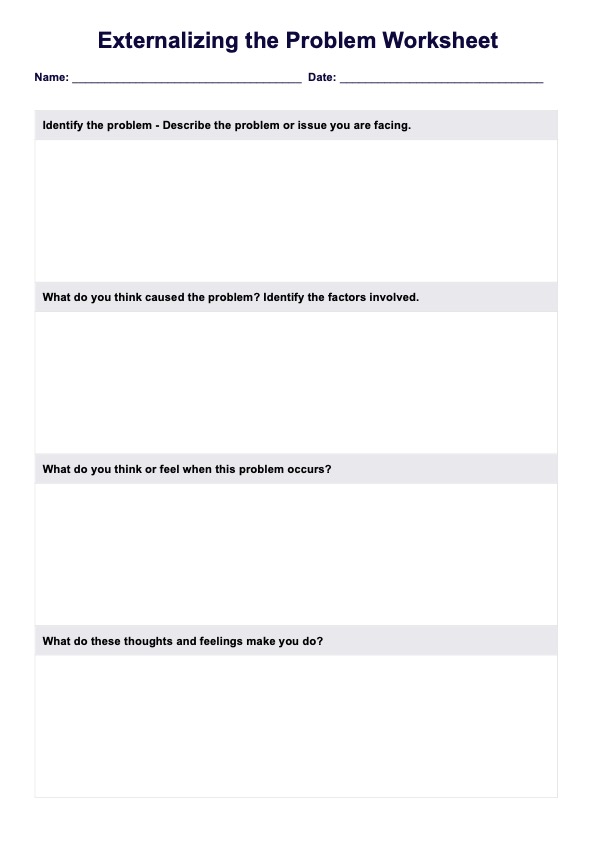Externalizing the problem in narrative therapy involves separating the issue from the individual's identity, framing it as something external to explore and address objectively. This reduces self-blame and fosters problem-solving.

Externalizing The Problem Worksheet
Learn more about Externalizing The Problem Worksheet, an essential narrative approach to understand better challenged and enhance problem solving.
Use Template
Externalizing The Problem Worksheet Template
Commonly asked questions
In solution-focused therapy, externalizing the problem shifts the focus from the individual to the issue itself, enabling clients to concentrate on their strengths and solutions instead of personalizing the challenge.
The four stages are externalizing the problem, mapping its influence, exploring unique outcomes, and re-authoring the story to create a positive and empowering narrative.
EHR and practice management software
Get started for free
*No credit card required
Free
$0/usd
Unlimited clients
Telehealth
1GB of storage
Client portal text
Automated billing and online payments











